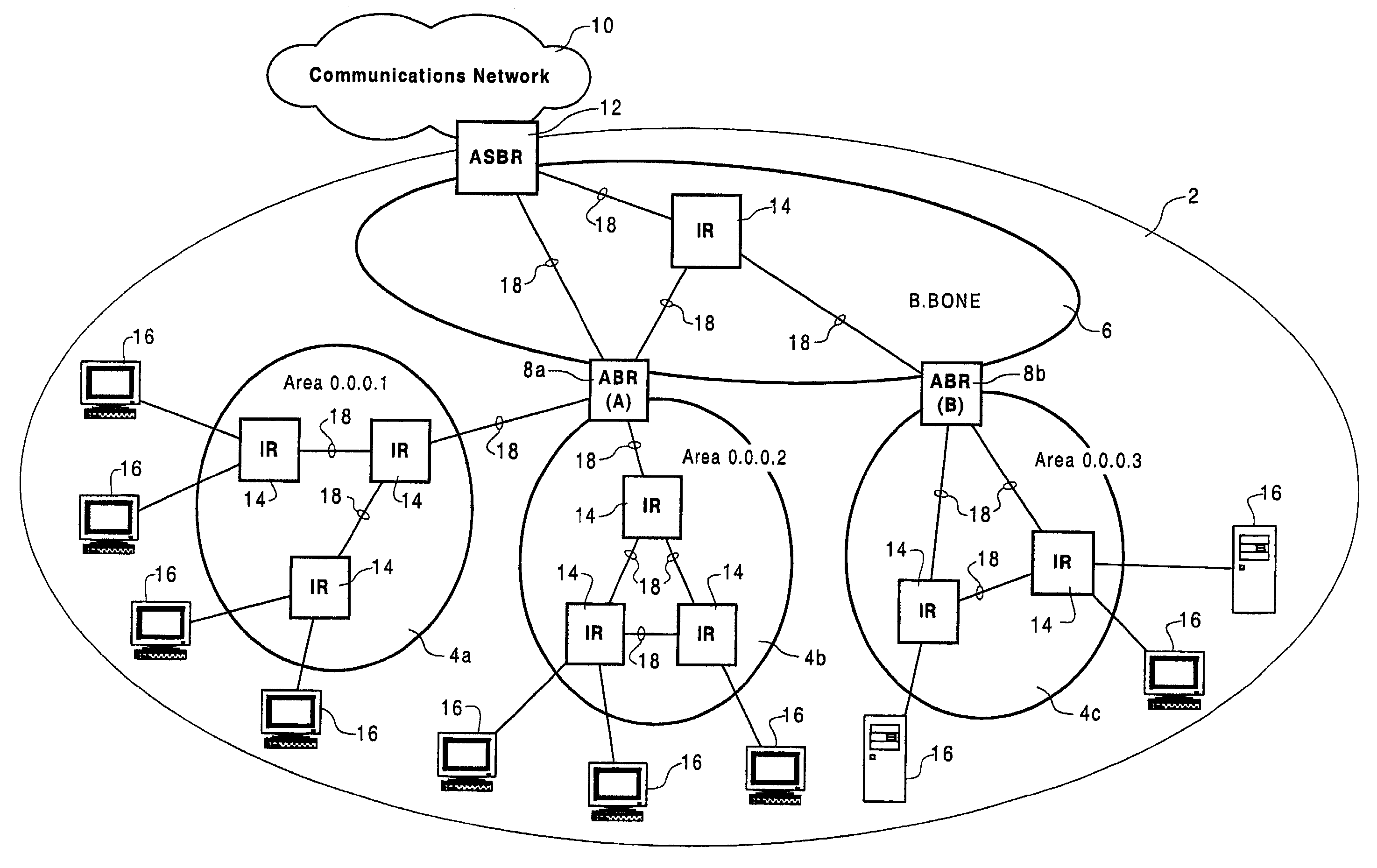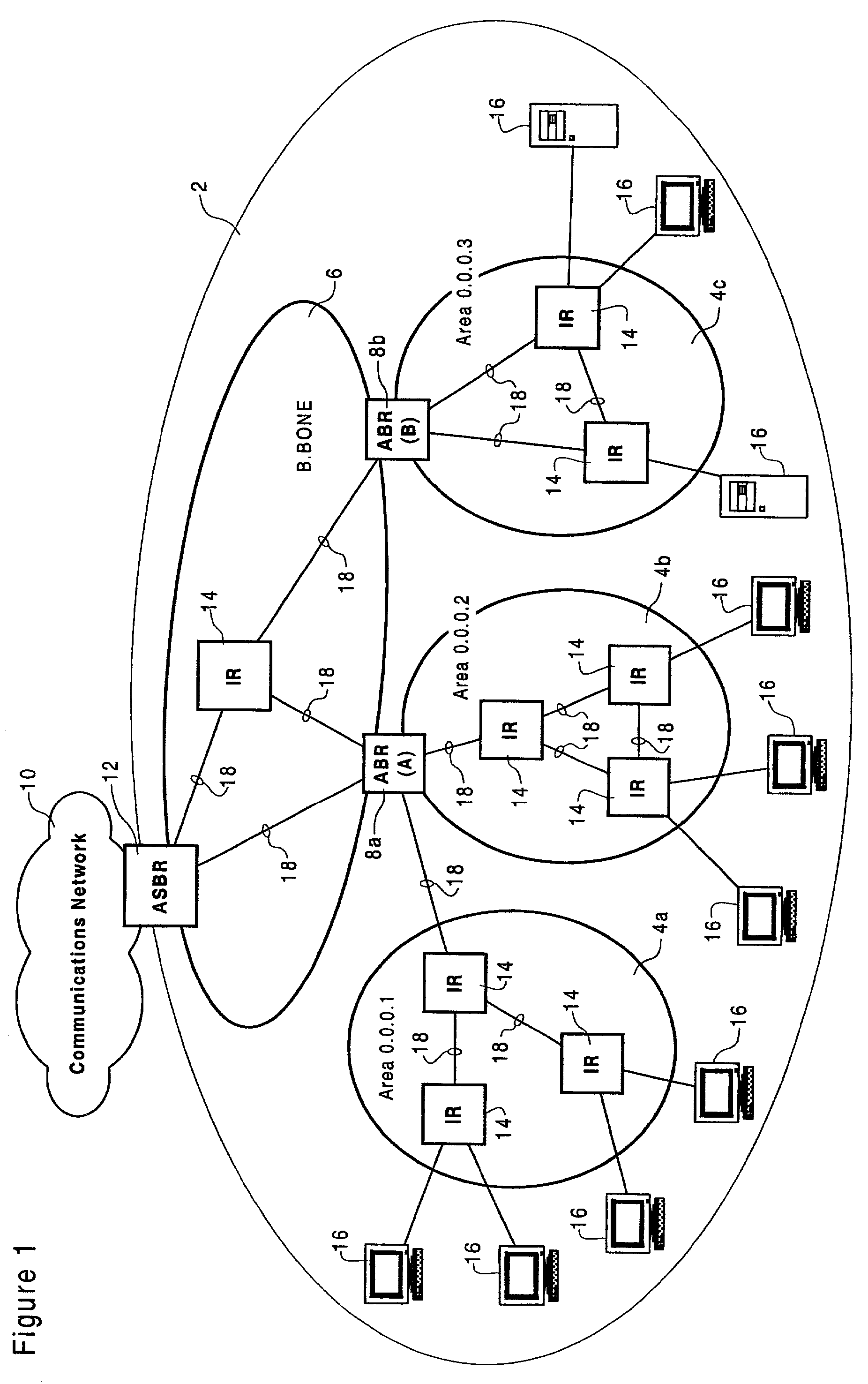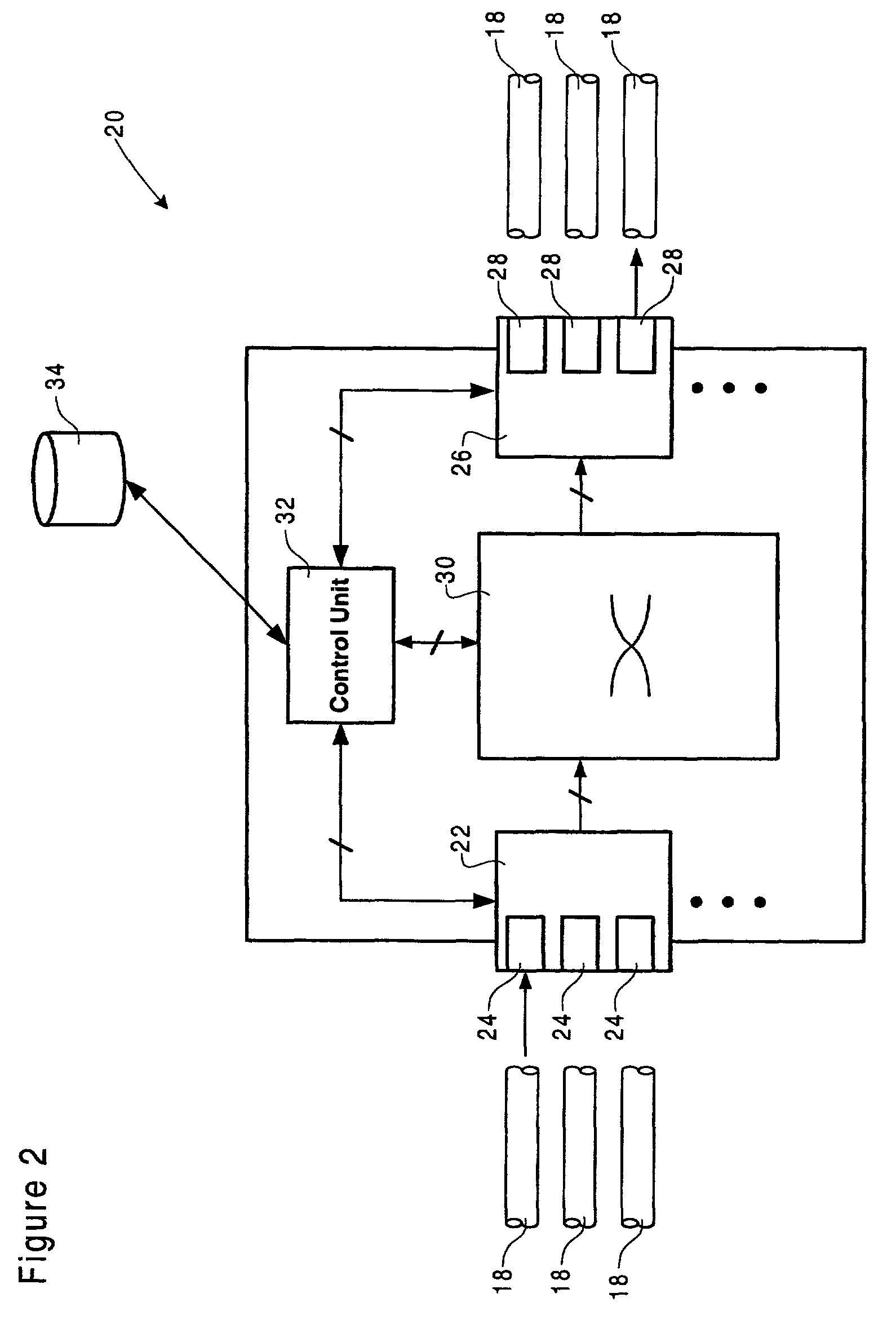Policy-based forwarding in open shortest path first (OSPF) networks
a policy-based forwarding and network technology, applied in the field of routing protocols, can solve the problems of affecting the entire autonomous system equally, scalability and network maintenance difficulties, and the inability of the router to forward packets
- Summary
- Abstract
- Description
- Claims
- Application Information
AI Technical Summary
Benefits of technology
Problems solved by technology
Method used
Image
Examples
Embodiment Construction
[0032]The present invention provides a method and a system (which may take the form of, for example, a router and / or a computer program adapted for controlling the router) for policy-based control of traffic forwarding within an autonomous system. FIG. 1 illustrates an exemplary autonomous system 2 in which the present invention may be deployed. In the embodiment of FIG. 1, the autonomous system 2 includes three areas (Area 0.0.0.1, Area 0.0.0.2 and Area 0.0.0.3) 4a-4c that are linked to a backbone network 6 via one or more respective Area Border Routers (ABRs) 8. The autonomous system 2 is coupled to an external communications network 10 (such as the public internet) via an Autonomous System Border Router (ASBR) 12. Each area 4 includes one or more Internal Routers (IRs) 14, which control the forwarding of traffic among user machines 16 (e.g. PCs, not shown) and the ABRs 8 hosting the area 4. The routers 8,12,14 are coupled together by links 18 (which may be physical or logical lin...
PUM
 Login to View More
Login to View More Abstract
Description
Claims
Application Information
 Login to View More
Login to View More - R&D
- Intellectual Property
- Life Sciences
- Materials
- Tech Scout
- Unparalleled Data Quality
- Higher Quality Content
- 60% Fewer Hallucinations
Browse by: Latest US Patents, China's latest patents, Technical Efficacy Thesaurus, Application Domain, Technology Topic, Popular Technical Reports.
© 2025 PatSnap. All rights reserved.Legal|Privacy policy|Modern Slavery Act Transparency Statement|Sitemap|About US| Contact US: help@patsnap.com



